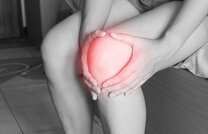
Clinical Pearl 3: How the Hip Relates to Other Areas of the Body
In the last segment, I highlighted the relationship between anatomy and movement. Let’s go a step further and talk about why it can be complicated and challenging to diagnose hip issues.
DIAGNOSING YOUR HIP ISSUES:
For some individuals, a diagnosis can be relatively easy. One example is a relatively acute onset of hip pain which leads you to the doctor. This results in a diagnosis and a referral for and participation in rehabilitation, leading to your pain dissipating. Congratulations if this is you! For others, hip pain can come on slowly over time with nothing seemingly creating the pain. This pain may come and go over months, and the body will make compensations around this pain, as previously discussed. By the time a diagnosis is reached and rehab is recommended, it might be months, or years, of compensations which rehab will attempt to unravel. Through my career, I’ve had the opportunity to work with a large number of patients who fall in this category. While many individuals in this group are successful with conservative treatment interventions, there are those who may qualify for and undergo surgery. There is an additional group to discuss. This group consists of those who have no hip pain, but other aches, pains, or body ailments which may be related to hip insufficiencies. This one is a bit harder to comprehend, so let’s discuss this group for a moment.
In a previous pearl, it was introduced that your body unconsciously compensates around pain creating dysfunctional movement patterns. The quote “path of least resistance” is very appropriate relating to compensations within the body, and the body does this extremely well. These faulty patterns can directly affect the sacroiliac joint, or SI joint, lumbar spine and knee as these joints are directly above or below the hip. If your hip is unable to fully function with everyday, or sport, activities then something else must pick up the slack. These joints can take on abnormal loads and torques related to hip insufficiencies, and be a source of pain for you. For example, if you have pain in your low back and a medical practitioner assesses your back and diagnoses you with sacroiliac dysfunction, core stability and general flexibility are commonly used in a rehabilitation program. If the hips are not included within the rehab program, this could be a detriment to your outcome due to the direct relationship between the hip and sacroiliac joint.

Indirectly, inefficiencies stemming from the hips can be related to altered thoracic spine function, including rib dysfunction, and continue up the chain to affect scapulohumeral mechanics, or the shoulder. As you move down the chain, muscle imbalances in the hip can contribute to faulty mechanics at the foot and ankle complex. The hip is an essential foundation for translating forces between your lower and upper body in weight bearing. Because hip dysfunction can influence a number of other areas in the body, it is especially important to appreciate this relationship if you haven’t experienced pain in your hip. While I cannot say that pain in the pinky toe is related to a faulty hip, it can be related to a large number of other issues!

CHRONIC ISSUES TO CONSIDER:
In my experience, it is not uncommon for patients to experience multiple complaints, receive various diagnoses over time, and receive treatment for each one individually while the hip wasn’t assessed as an influencing factor. Recurring ankle sprains, chronic issues like anterior knee pain, ITBand issues, hip flexor tendinitis, piriformis pain, sacroiliac and low back pain are all examples of issues which can relate to hip dysfunction. Or, individuals may be told that there is weakness at the hip, and strengthening the hip will help resolve these issues. While weakness at the hip may be a contributing factor, not everyone can strengthen the hip and resolve these chronic issues.
Over my years practicing, I have candid conversations with patients related to “chronic” issues in the lower body, like “chronic hip flexor tendinitis”. Issues like this example may initially respond to conservative treatment, and later return with episodes lasting longer and more intense than the first episode. This condition may continue to worsen over time, despite efforts spent to rid your body of these complaints. Another example can be found at the ankle. How many times can someone do balance and other strengthening exercises for the ankle, yet continue to “roll it” walking around, and not related to sport activity? In this scenario, the ankle may truly be “unstable”. However, if the ankle is diagnosed as “stable”, then why does it continue to “roll” with less provocation? Ask yourself, and your healthcare provider, could my hips be related to these recurring issues?
In my experience, it is not uncommon for patients to experience multiple complaints, receive various diagnoses over time, and receive treatment for each one individually while the hip wasn’t assessed as an influencing factor. Recurring ankle sprains, chronic issues like anterior knee pain, ITBand issues, hip flexor tendinitis, piriformis pain, sacroiliac and low back pain are all examples of issues which can relate to hip dysfunction. Or, individuals may be told that there is weakness at the hip, and strengthening the hip will help resolve these issues. While weakness at the hip may be a contributing factor, not everyone can strengthen the hip and resolve these chronic issues.
Over my years practicing, I have candid conversations with patients related to “chronic” issues in the lower body, like “chronic hip flexor tendinitis”. Issues like this example may initially respond to conservative treatment, and later return with episodes lasting longer and more intense than the first episode. This condition may continue to worsen over time, despite efforts spent to rid your body of these complaints. Another example can be found at the ankle. How many times can someone do balance and other strengthening exercises for the ankle, yet continue to “roll it” walking around, and not related to sport activity? In this scenario, the ankle may truly be “unstable”. However, if the ankle is diagnosed as “stable”, then why does it continue to “roll” with less provocation? Ask yourself, and your healthcare provider, could my hips be related to these recurring issues?

